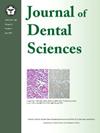探讨牙科手术与三叉神经-心脏反射之间的关系
IF 3.1
3区 医学
Q1 DENTISTRY, ORAL SURGERY & MEDICINE
引用次数: 0
摘要
背景/目的:三叉神经-心脏反射(TCR)是一种以三叉神经刺激后心率(HR)和平均动脉血压(MABP)突然降低为特征的脑干反射。尽管在其他外科领域有充分的记录,但它在牙科手术中的作用仍不清楚。本研究采用实验动物模型研究常规牙科干预与TCR之间的关系。材料与方法本研究综合分析了课课组在2016 - 2023年间进行的一系列动物实验手术中获得的生理监测数据。用2只雄性Beagle犬和6只Lee-Sung微型猪评估常规牙科手术期间HR和MABP的变化。结果评分过程中HR和MABP均无明显变化。相比之下,根管治疗的TCR发生率最高,9.6%的病例中HR和MABP同时下降超过15%,5.6%的病例中下降超过20%。在36例患者中,拔牙触发TCR的比例为2.7%,而种植体未导致HR和MABP同时降低,但观察到明显的HR波动。结论口腔清洁过程中的不适不太可能诱发TCR,而物理和化学刺激的根管治疗更容易引发TCR的发生。拔牙同样可以通过机械刺激引起TCR。虽然在本研究中,植入物并未导致HR和MABP同时降低超过15%,但观察到HR波动大于20%,可能代表TCR的早期迹象。本文章由计算机程序翻译,如有差异,请以英文原文为准。
Exploring the correlation between dental procedures and trigemino-cardiac reflex
Background
/purpose: The trigemino-cardiac reflex (TCR) is a brainstem reflex characterized by sudden reductions in heart rate (HR) and mean arterial blood pressure (MABP) following trigeminal nerve stimulation. Although well-documented in other surgical fields, its role during dental procedures remains unclear. This study examined the association between routine dental interventions and TCR using an experimental animal model.
Materials and methods
This study presented a comprehensive analysis of physiological monitoring data obtained during a series of animal experimental surgeries conducted by our research team between 2016 and 2023. Changes in HR and MABP during routine dental procedures were evaluated using two male Beagle dogs and six Lee-Sung miniature swine.
Results
No significant changes in HR or MABP were observed during the scaling procedures. In contrast, root canal treatments showed the highest TCR incidence, with simultaneous HR and MABP decreases exceeding 15 % in 9.6 % of cases and 20 % in 5.6 % of cases. Tooth extraction triggered TCR in 2.7 % of 36 cases, while implant placement did not result in simultaneous HR and MABP reductions, but notable HR fluctuations were observed.
Conclusion
This study indicates that discomfort experienced during dental scaling is unlikely to induce TCR, whereas root canal treatment, involving both physical and chemical stimulation, appears more likely to trigger its occurrence. Tooth extraction may similarly provoke TCR through mechanical stimulation. Although implant placement does not result in a simultaneous reduction in HR and MABP exceeding 15 % in this study, significant HR fluctuations greater than 20 % were observed, potentially representing early signs of TCR.
求助全文
通过发布文献求助,成功后即可免费获取论文全文。
去求助
来源期刊

Journal of Dental Sciences
医学-牙科与口腔外科
CiteScore
5.10
自引率
14.30%
发文量
348
审稿时长
6 days
期刊介绍:
he Journal of Dental Sciences (JDS), published quarterly, is the official and open access publication of the Association for Dental Sciences of the Republic of China (ADS-ROC). The precedent journal of the JDS is the Chinese Dental Journal (CDJ) which had already been covered by MEDLINE in 1988. As the CDJ continued to prove its importance in the region, the ADS-ROC decided to move to the international community by publishing an English journal. Hence, the birth of the JDS in 2006. The JDS is indexed in the SCI Expanded since 2008. It is also indexed in Scopus, and EMCare, ScienceDirect, SIIC Data Bases.
The topics covered by the JDS include all fields of basic and clinical dentistry. Some manuscripts focusing on the study of certain endemic diseases such as dental caries and periodontal diseases in particular regions of any country as well as oral pre-cancers, oral cancers, and oral submucous fibrosis related to betel nut chewing habit are also considered for publication. Besides, the JDS also publishes articles about the efficacy of a new treatment modality on oral verrucous hyperplasia or early oral squamous cell carcinoma.
 求助内容:
求助内容: 应助结果提醒方式:
应助结果提醒方式:


